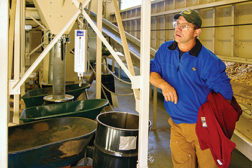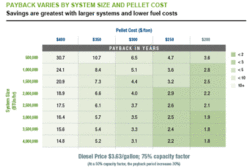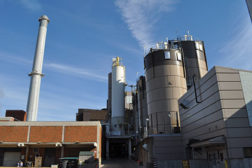Home » biomass
Articles Tagged with ''biomass''
Commercial, Residential Programs Encourage New Installations
Read More
Biomass Boilers Offer a Cost-Effective Alternative, Says GSA
Testing Shows High Boiler Efficiency and Favorable Payback under Many Conditions
August 18, 2014
March 12, 2014: Army Awards 20 Contracts for Renewable Energy
The Base Contracts Enable Third-Party-Financed Renewable Energy Projects
March 12, 2014
Sept. 12, 2013: US Renewable Energy Generation Up in First Half of 2013
Solar, Wind, and Biomass Energy Increased 12.1 Percent in First Half
September 12, 2013
Copyright ©2024. All Rights Reserved BNP Media.
Design, CMS, Hosting & Web Development :: ePublishing







